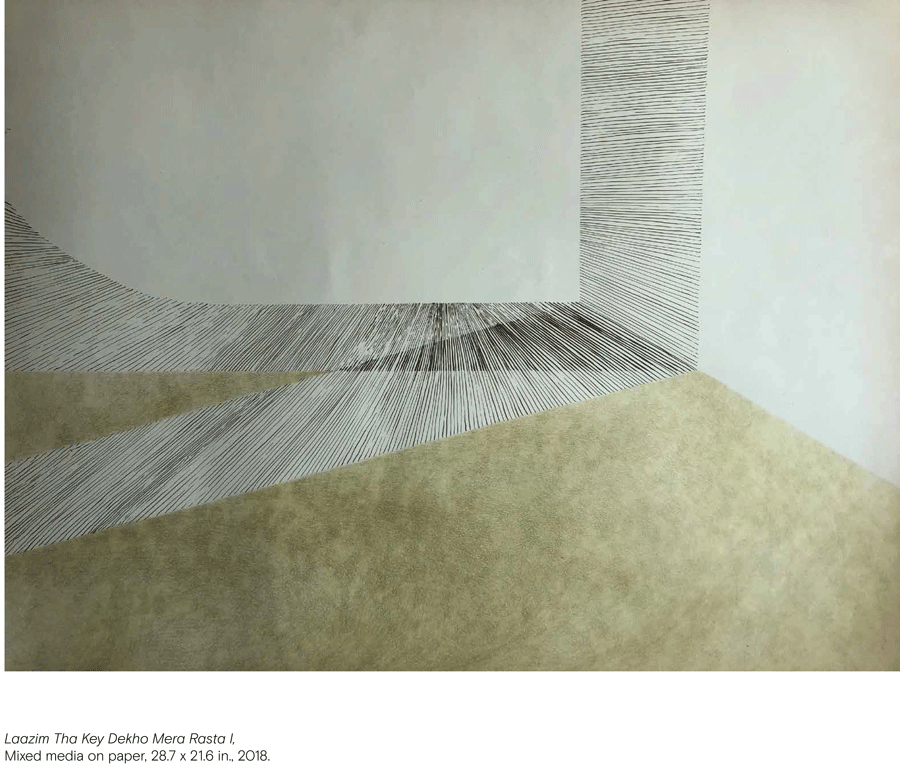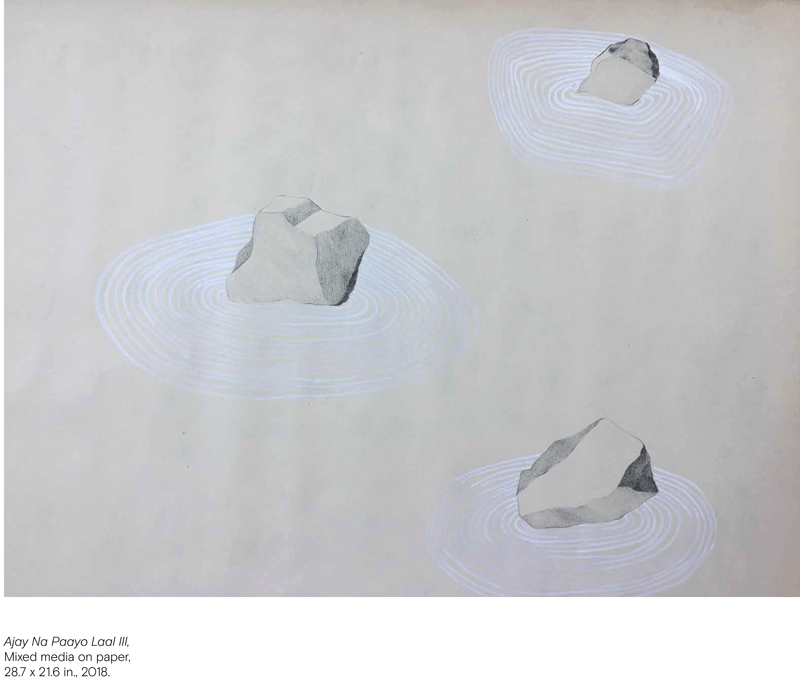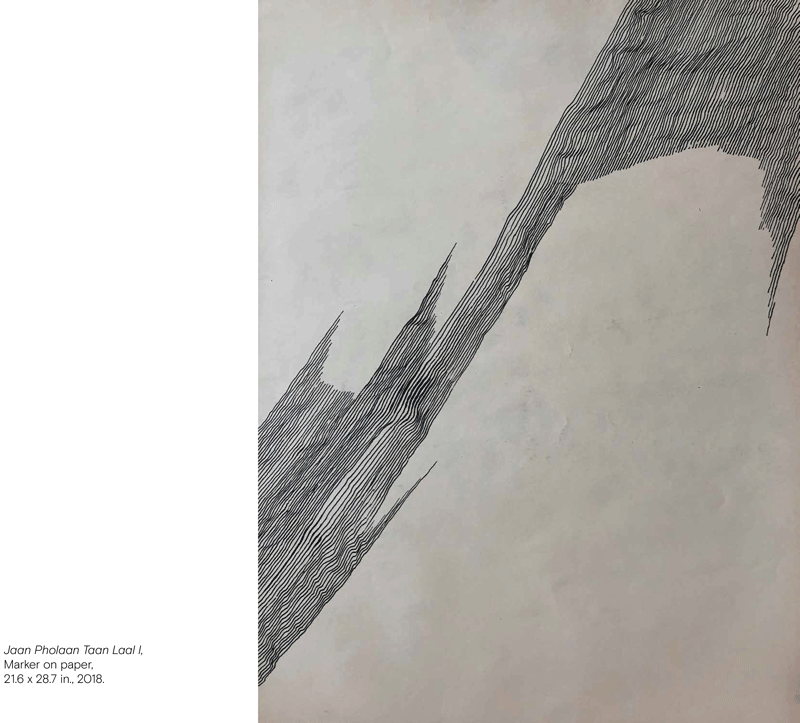Art Review: Maryam Rahman
By Nusrat Khawaja | Art Line | Published 7 years ago

Grief is an amorphous emotion. It seeps into everyday consciousness with unpredictable impact. It follows its own course in overwhelming the person experiencing bereavement and carves subtle pathways towards healing. With the passing away of artist Lala Rukh (1948-2017), her niece Maryam Rahman lost a mentor as well as a loving aunt.
Maryam Rahman was privileged to draw with Lala Rukh in her studio ever since she was a child. She observed the processes that contributed towards the creation of Lala Rukh’s spare but ever so eloquent style. Maryam’s recent show at Koel Gallery, Koi Din Aur, paid poignant tribute to the special bond she had with her late aunt. The title of the show is derived from Mirza Ghalib’s couplet that mourns the premature departure of a loved one:
“Lazim tha ke dekho mera raasta koi din aur. Tanha gaey kyoon? Ab raho tanha koi din aur.”
“You were meant to watch my journey for a while longer. Why did you leave alone? Now remain alone for a while longer [reviewer’s translation].”
The 17 works created on paper by Maryam Rahman display geometrical forms created by line work. The placement of the lines contributes enormously to the feel of measured abstraction. The lines are also “an attempt to deviate from the pain of loss” for the artist. There is considerable empty space within each drawing to balance mark making. Each sheet of paper is divided into zones of shapes and zones of emptiness. This conveys a feeling that the forms are evanescent and are floating in abstracted space.

The effect is consistent with the personal context from which this series of drawings has emerged – namely bereavement – and its profound connection with memory. The fine modulations in the thickness and thinness of each line can be mapped onto the modulations of emotion that assert themselves with varying intensity. They emerge from deep within the subjective framework of a memory matrix that is only ever partly visible.
Maryam Rahman states: “Drawing is a meditative process which gives you access to memories not easily accessible otherwise. At the same time it forces you to be present in the moment and therefore helps to accept the present for what it is, no matter how incomplete it feels without the person you have lost.” The “meditative process” Maryam refers to is undoubtedly rooted in minimalist expression for her. There is a zen-like quality to her drawings.
Within the show, the series titled ‘Mein Dhoond Thakee’ is the most minimalist. ‘Mein Dhoond Thakee II’ divides the sheet in two sections bisected with a fuzzy, horizontal line. Both sections are coloured in grey with the upper part a warm grey and the lower part a cool grey. Attention is naturally drawn to the dark zone of the line against the pale background as if one’s consciousness is being directed towards a specific area of meditative concentration. The meditative effect is evocative of the karesansui style of the dry Japanese stone gardens (also known as zen gardens), especially in the works ‘Ajay Na Paayo Laal’ I and II. Just as these gardens were meant to convey the essence of the natural landscape, so too do Maryam’s drawings become representations of the essence of a relationship which will now be nurtured through memory.

On the gallery walls at Koel, amidst the drawings, Maryam has posted some memories of experiences she shared with Lala Rukh. She recalls the powerful influence of Hindustani classical music on the late artist’s oeuvre, particularly with reference to its abstract and transcendent nature. It is tempting to imagine that some of the drawings could be interpreted as fragments of music. Particularly in the ‘Jaan Pholan Taan Lal’ series I-IV, the unidentifiable yet organised organic forms that lift against the empty backdrop can easily be read as visual maps for musical sounds.
Maryam Rahman’s tribute to Lala Rukh is not simply an emanation of grief; it also depicts the process of healing from sorrow through the medium of art. Perhaps the infinite forms of abstract geometry are the best salve for the absence of a loved one who could not stay a while longer.


